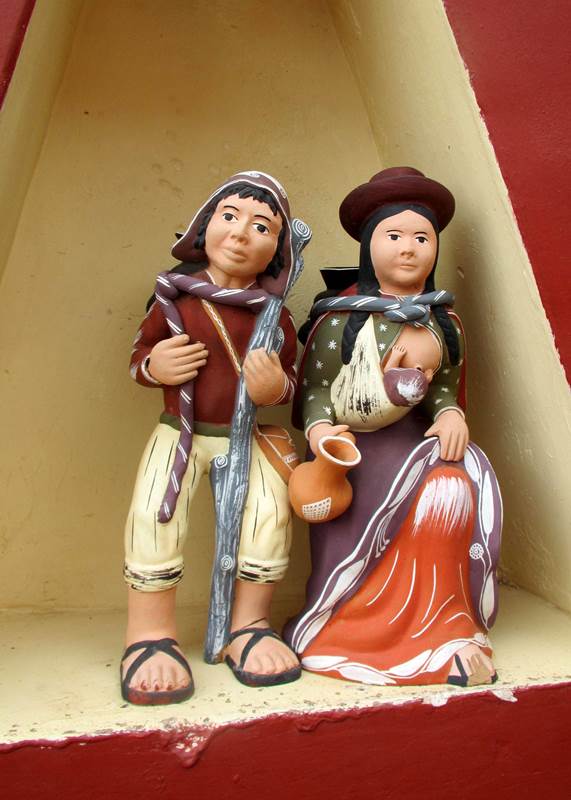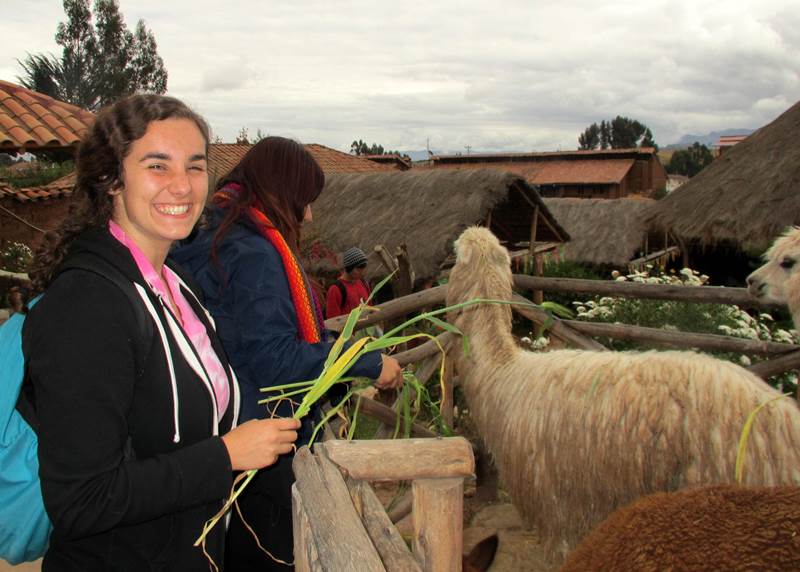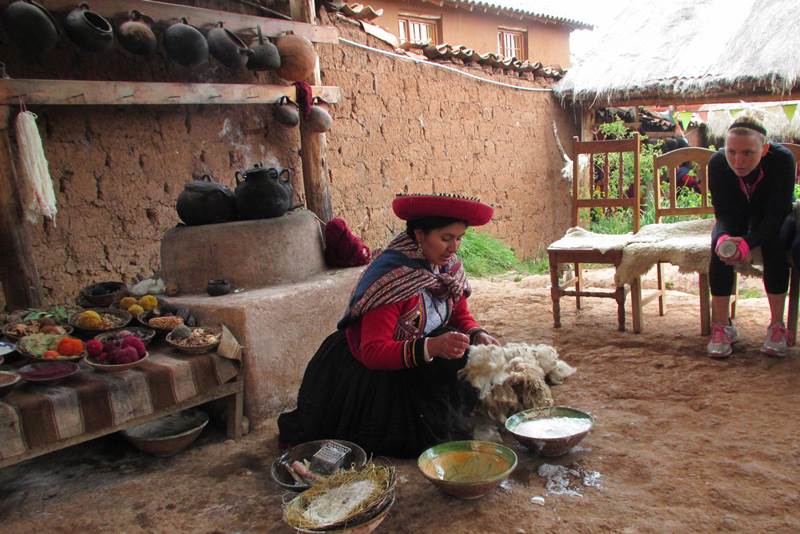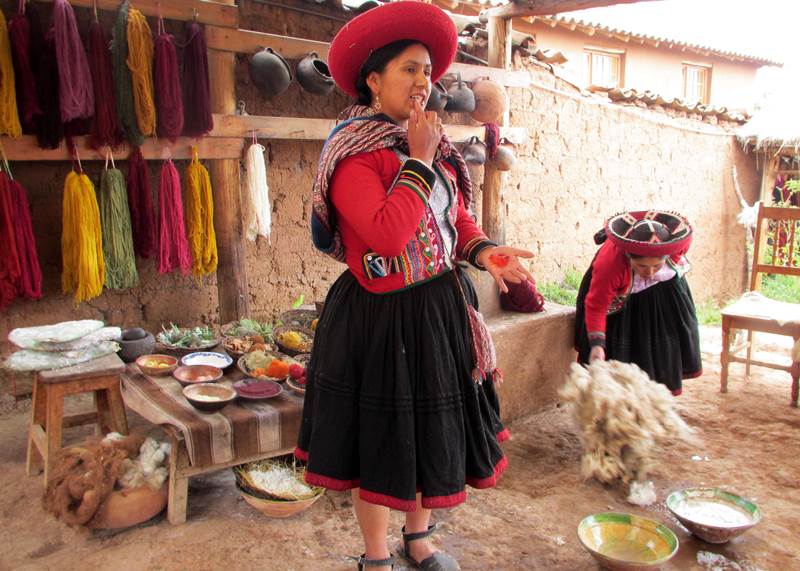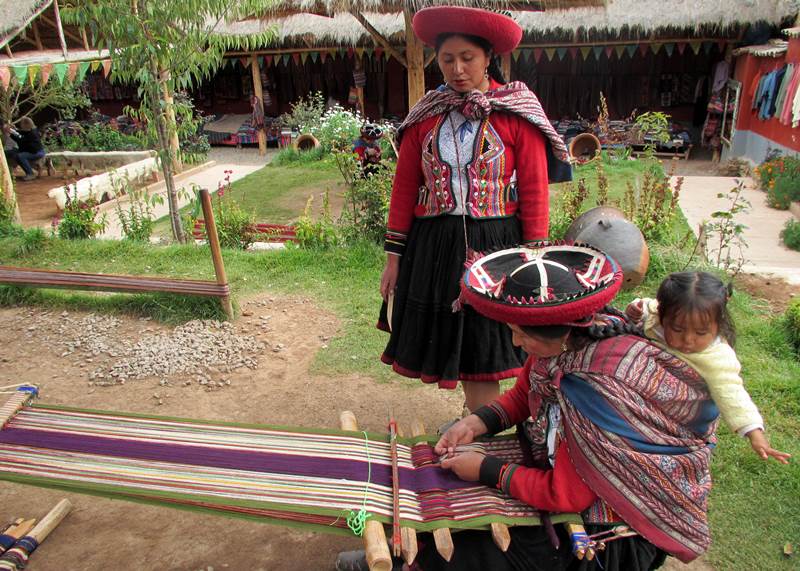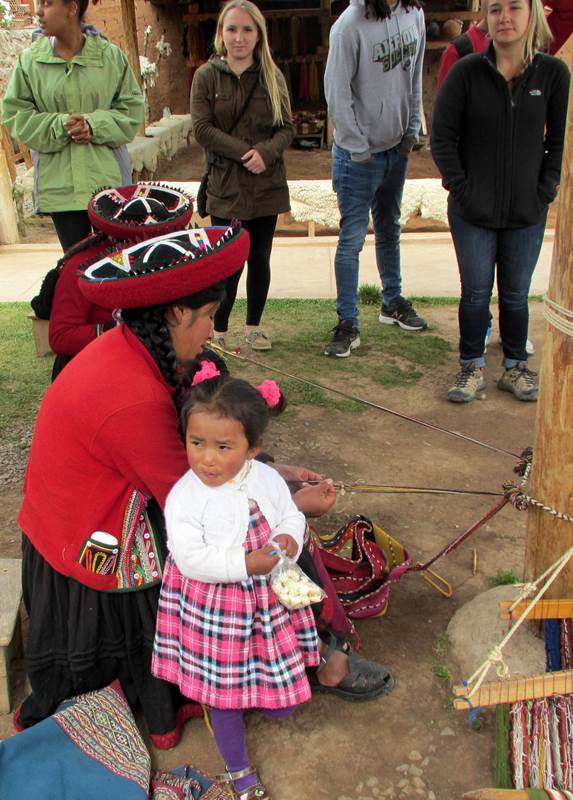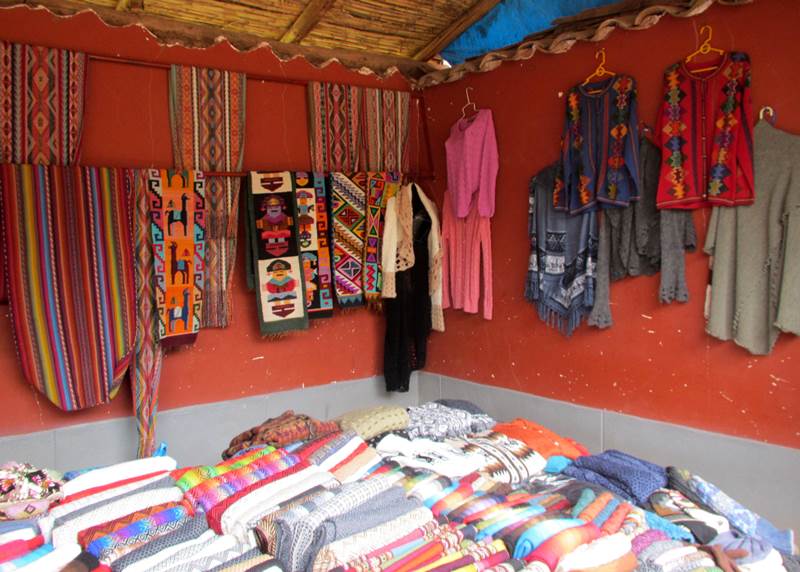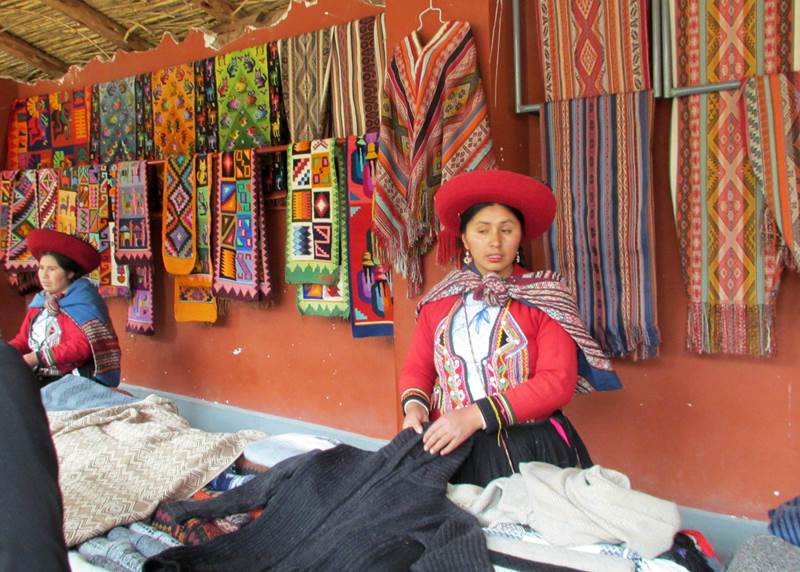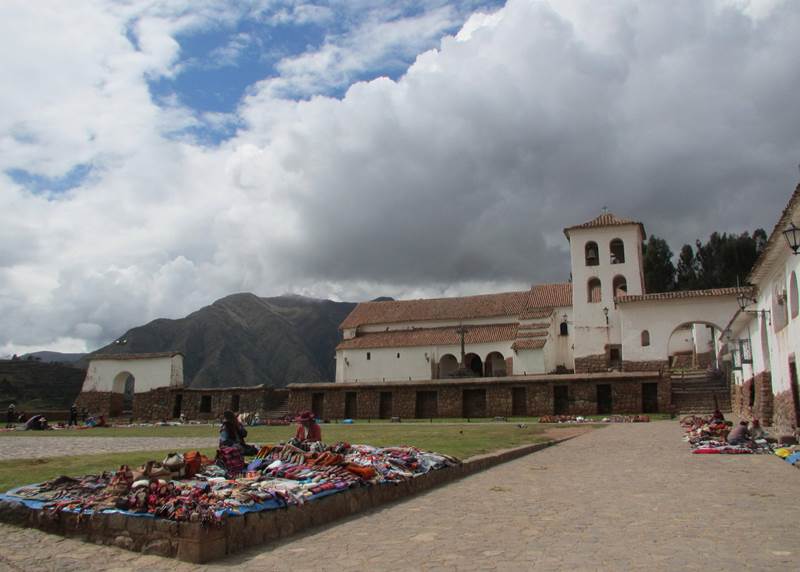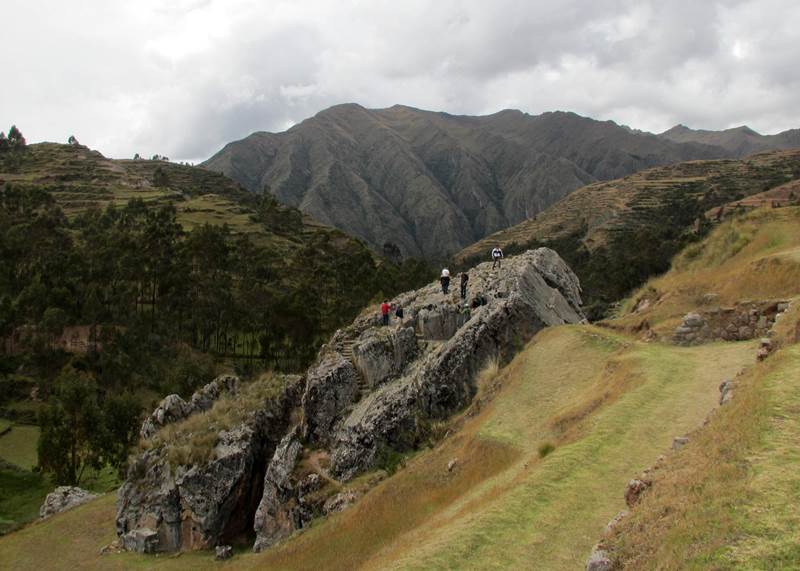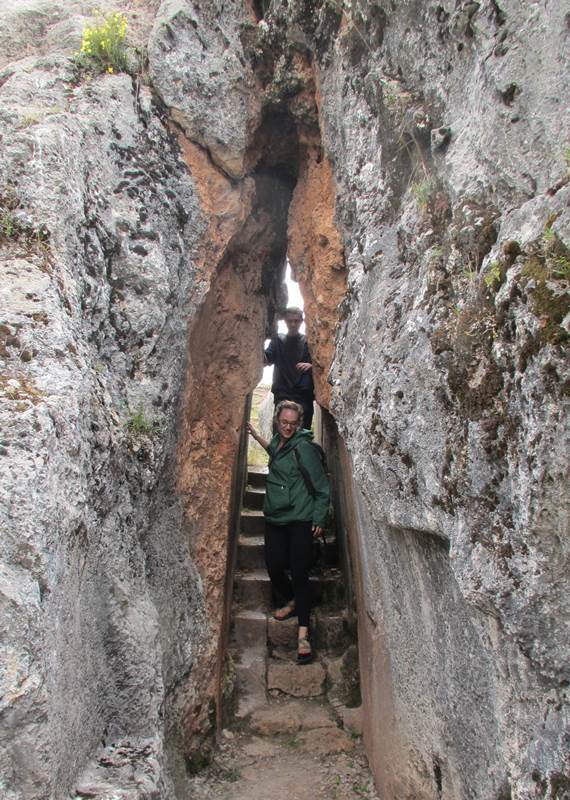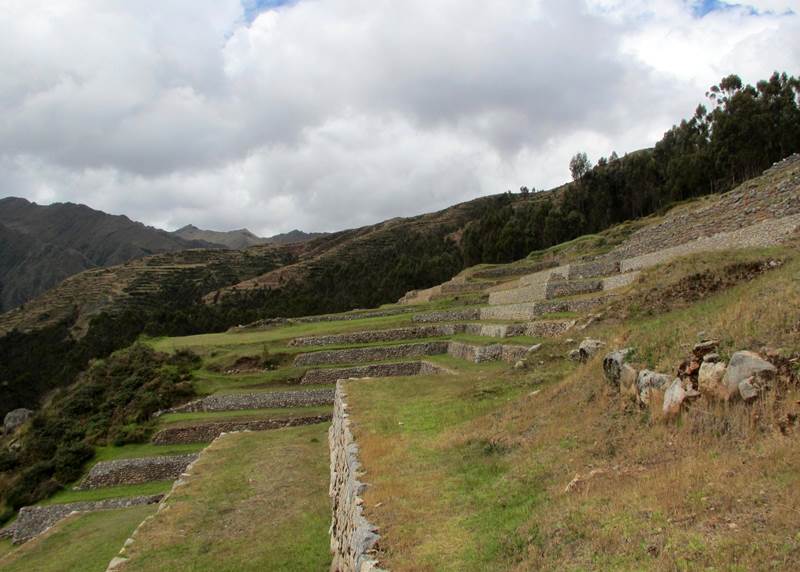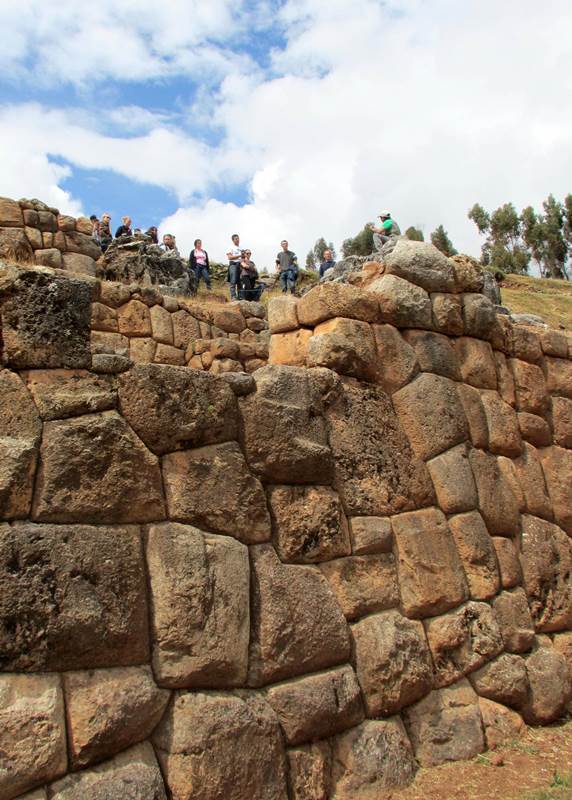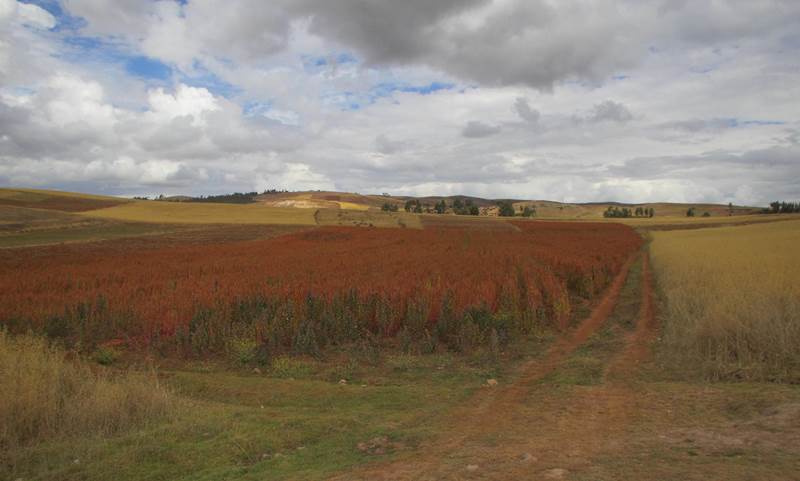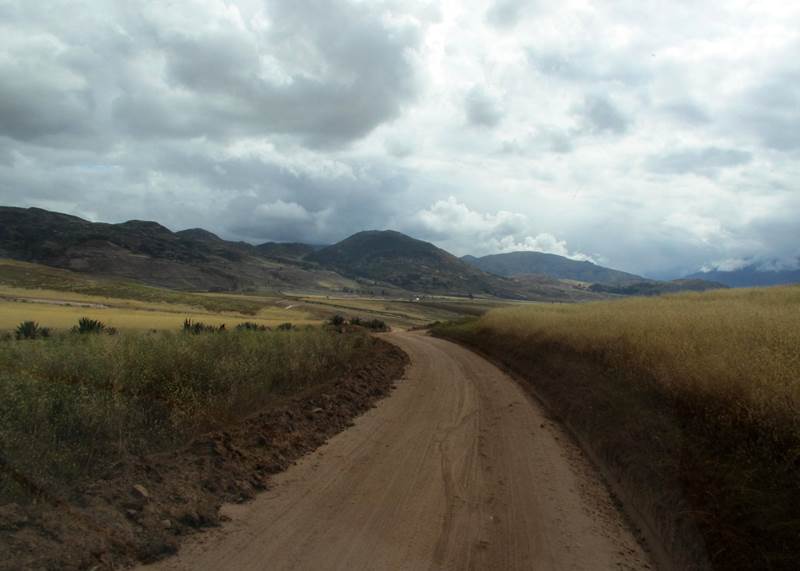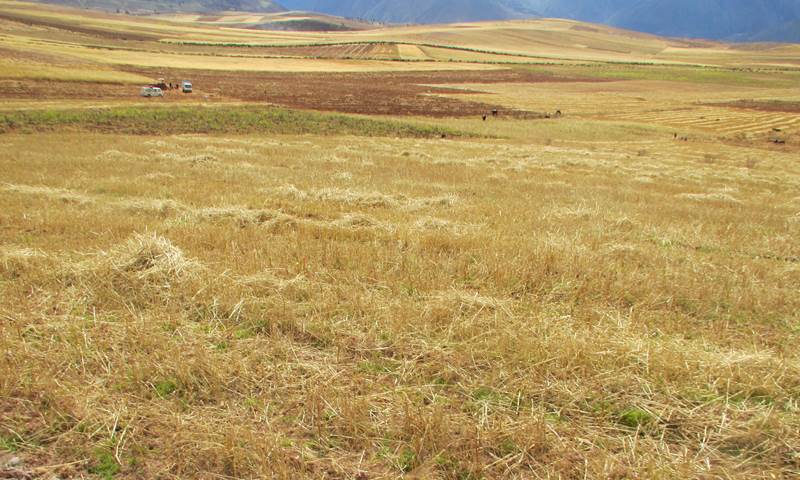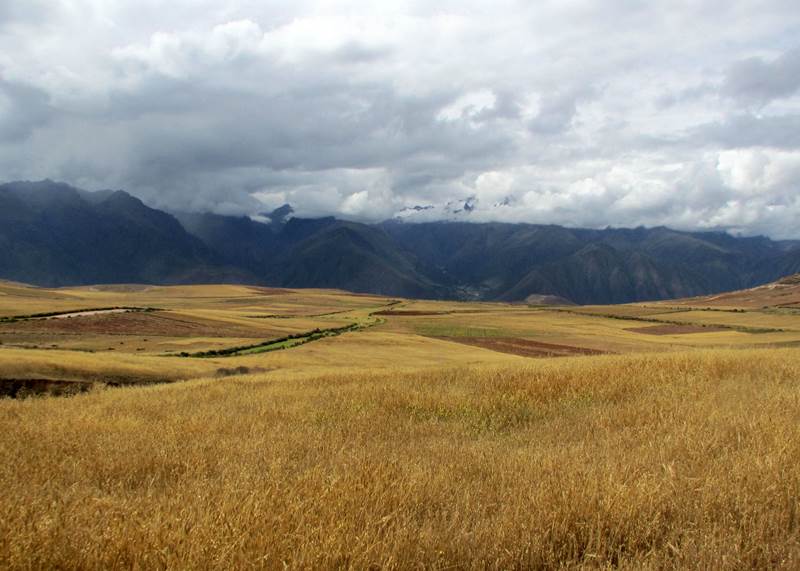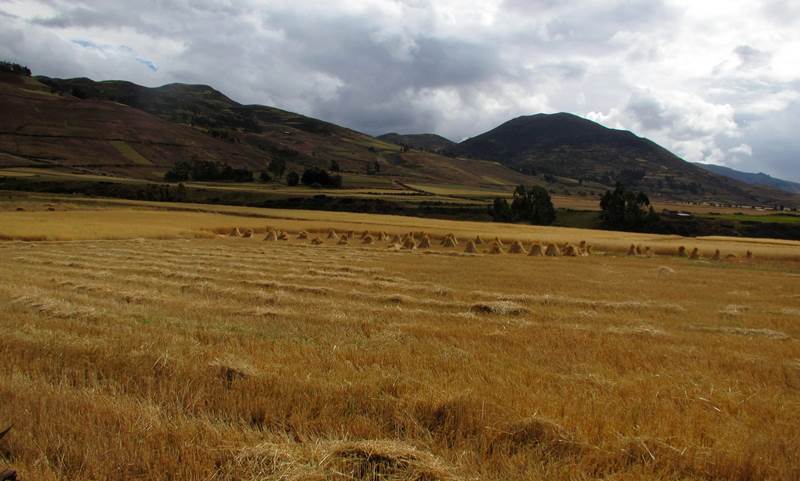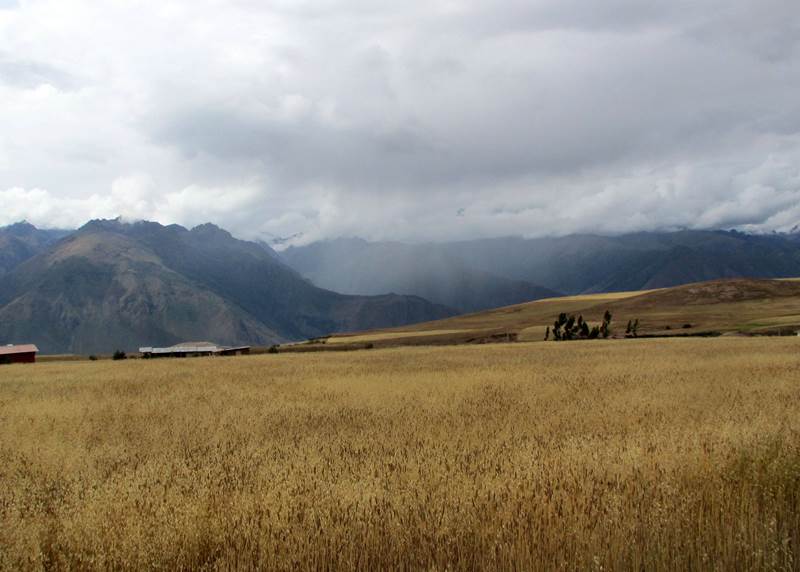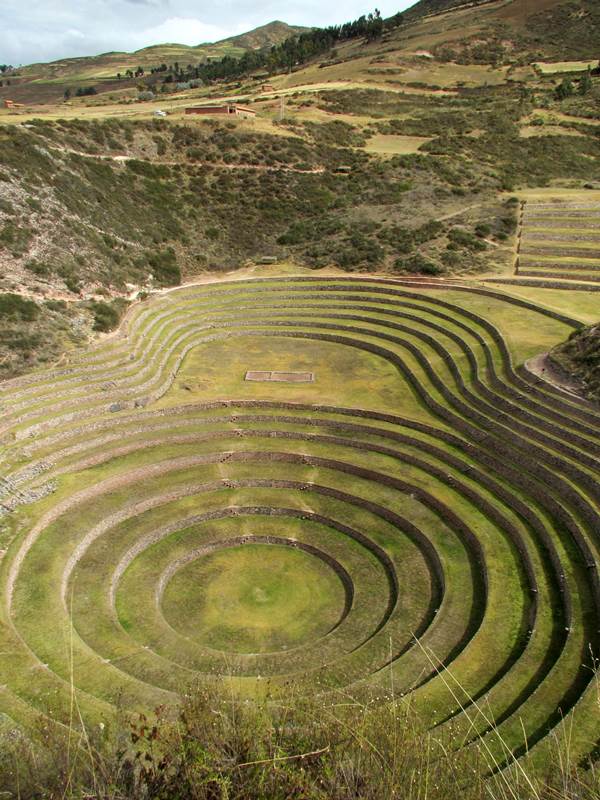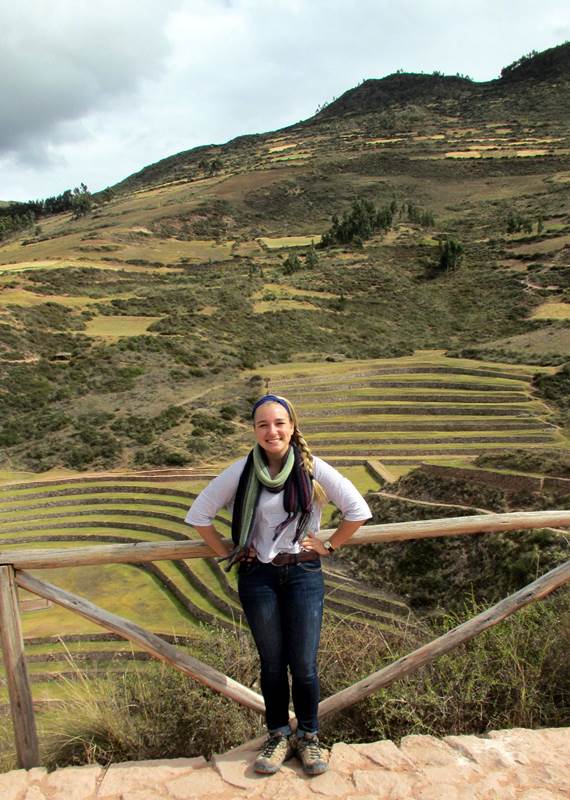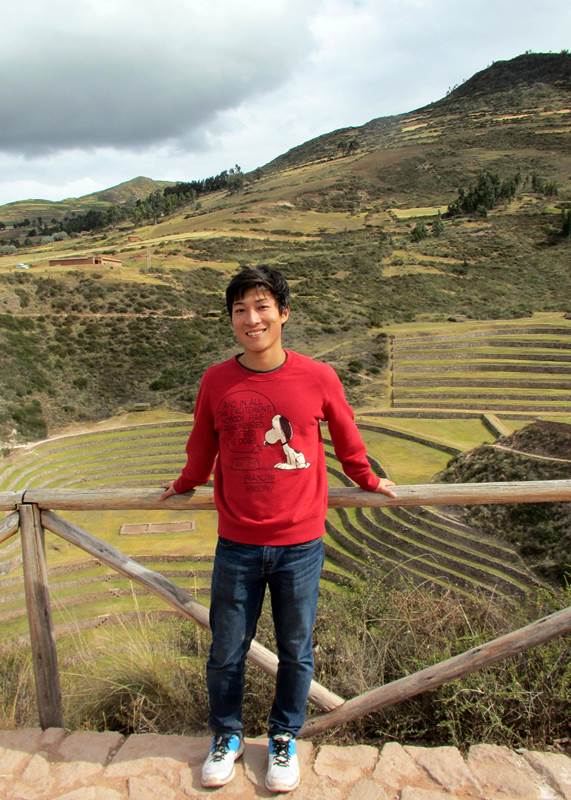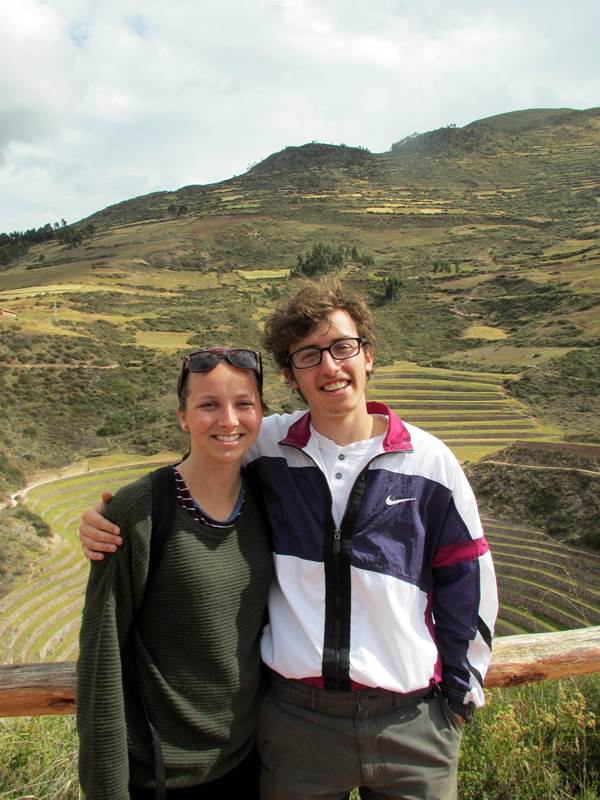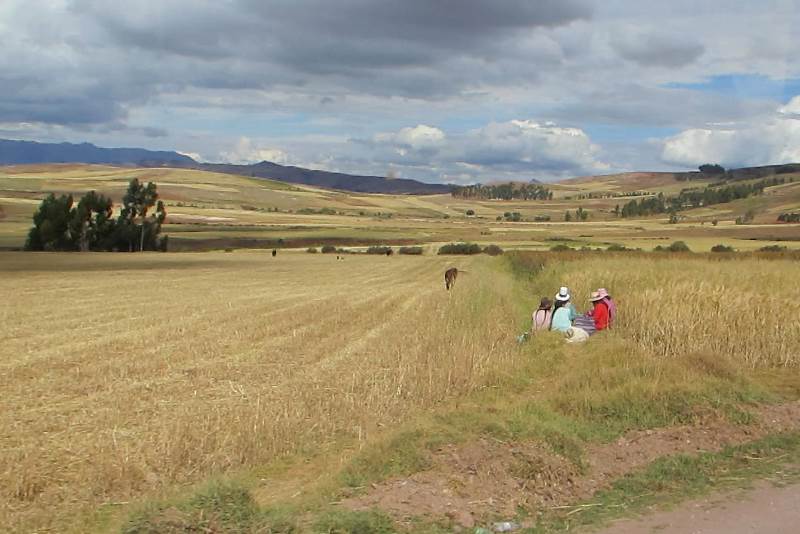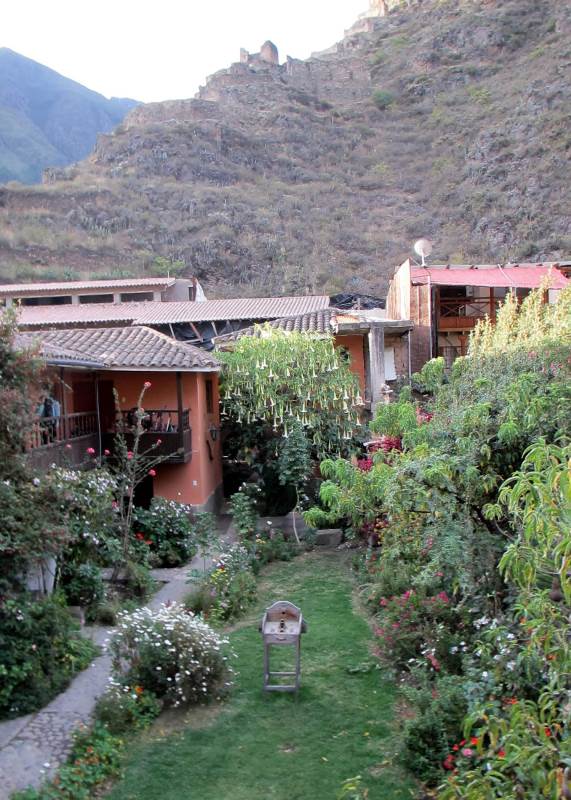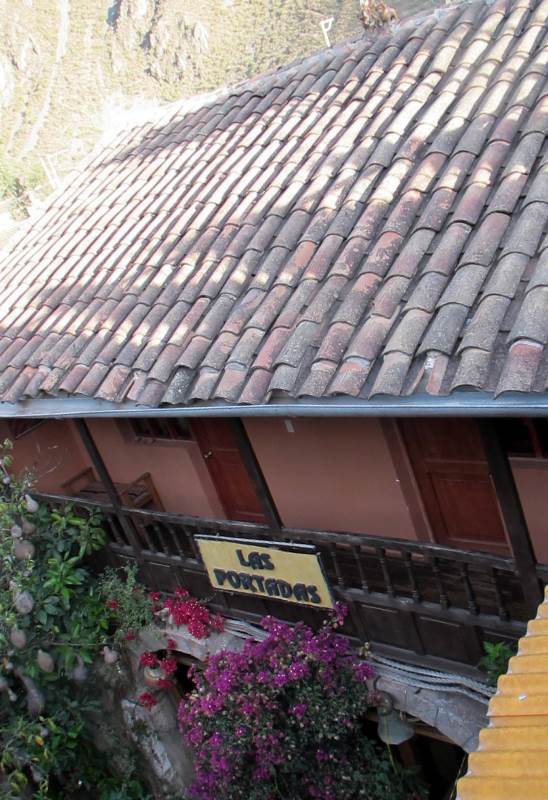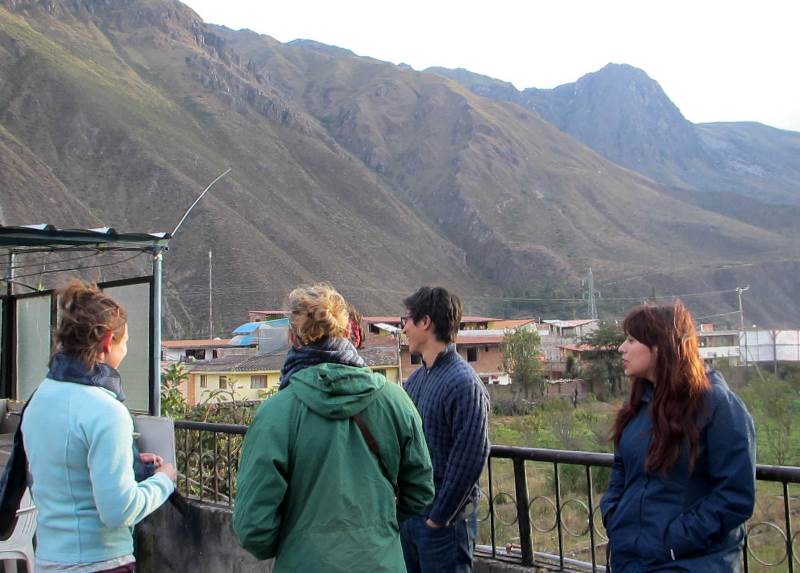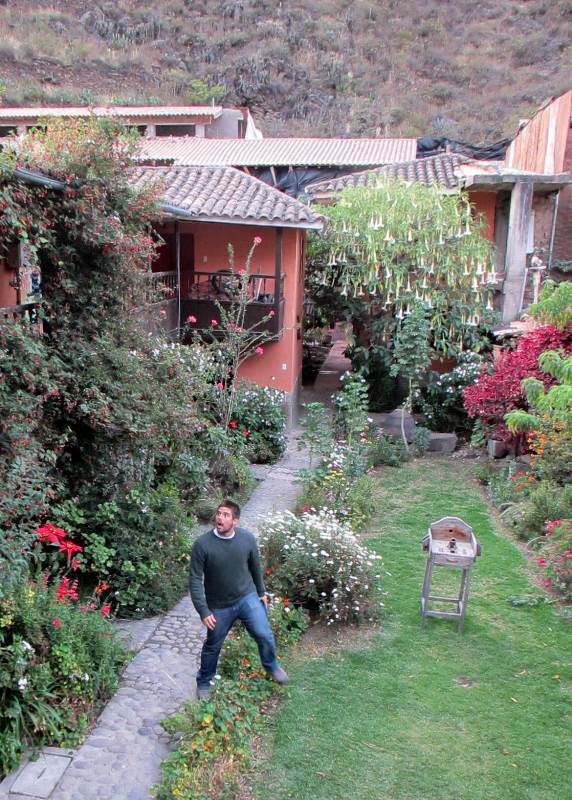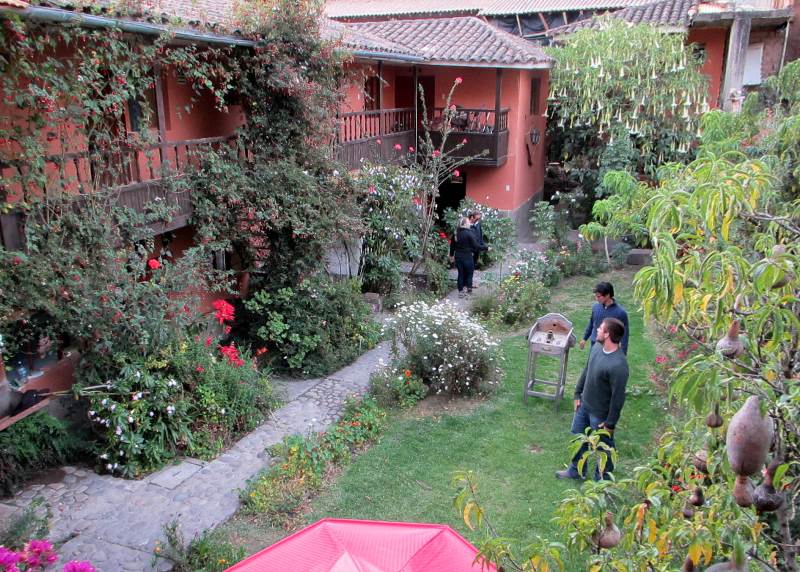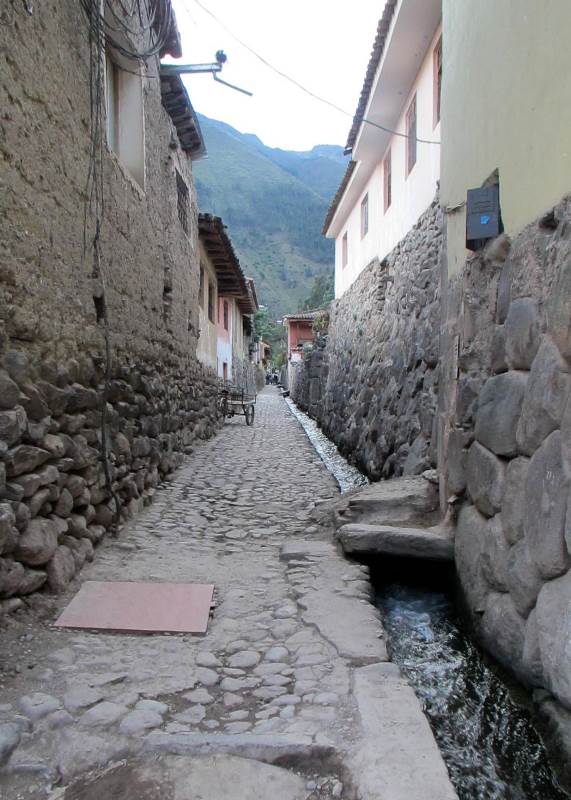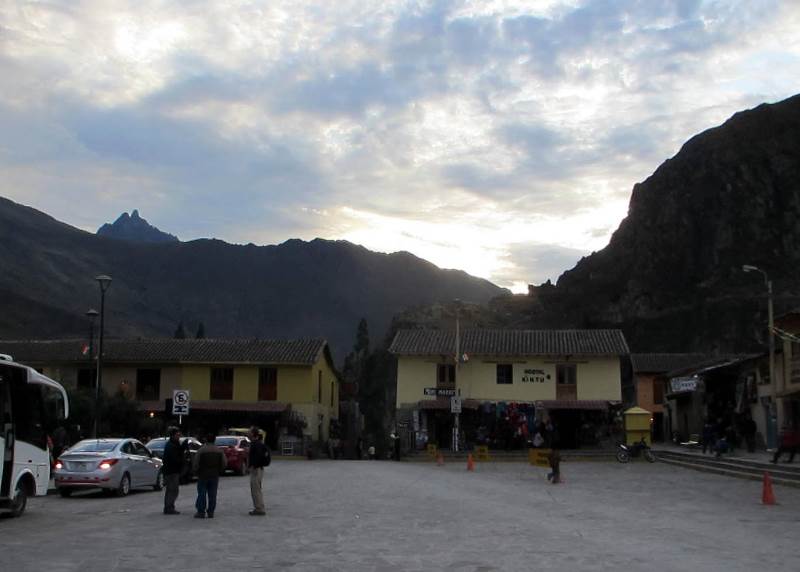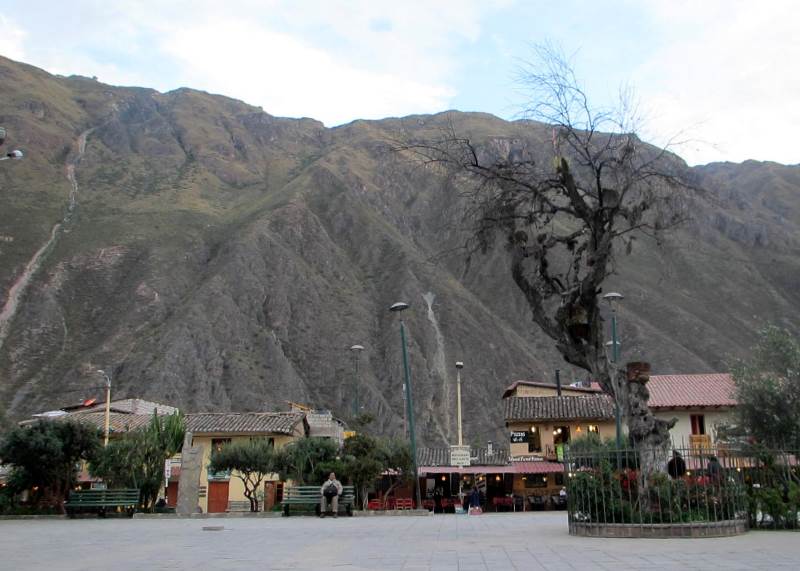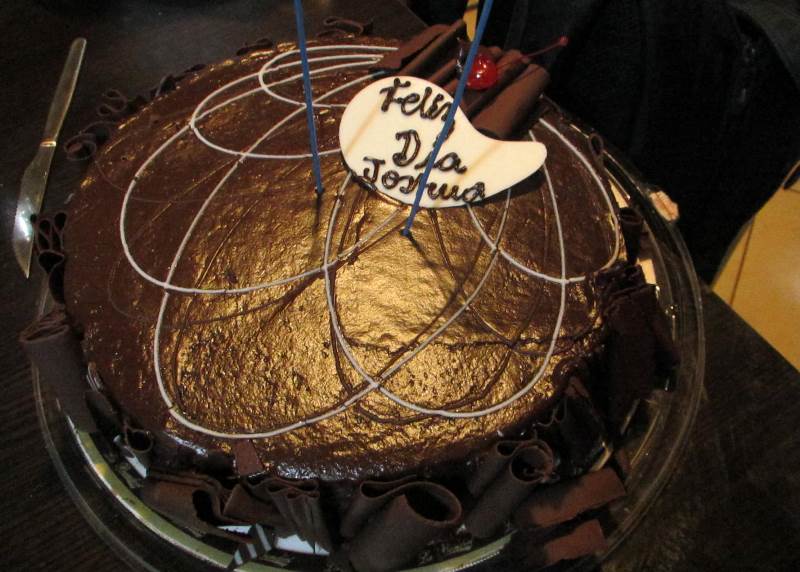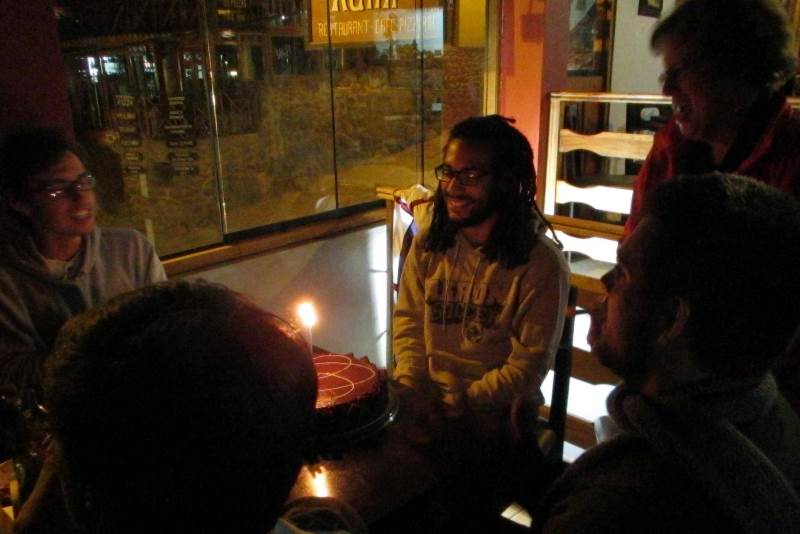Crossing the Sacred Valley: Chinchero to Moray and More
By Karen and Duane Sherer Stoltzfus
Peru SST Co-Directors, 2014-2015
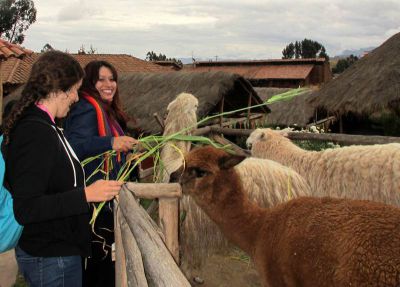
Early on Monday morning, students said good-bye to their host families near Cusco and we made our way into the Sacred Valley by bus, accompanied by a new guide, Rubén.
Our first stop included an opportunity to upgrade our wardrobes or, in many cases, the wardrobes of those we love. Chinchero is a textile capital at 3,800 meters, or 12,467 feet, above sea level. It is home to many textile workshops that provide a living to local families.
A young woman welcomed us to a small weavers shop, where she and others demonstrated the process of cleaning, softening and coloring llama, alpaca and sheep’s wool. The natural coloring agents included corn (purple), a cactus parasite (red), and eucalyptus (green).
Rubén pointed out the nearby valley where an international airport is scheduled to be built, allowing visitors to bypass Lima and arrive in Peru in the middle of the Sacred Valley. We couldn’t help but wonder what kind of an impact the arrival of this airport would have on this community of artisans and farmers.

Surrounding the town, there is also a huge archaeological site that includes walls, squares and terraces near the Chinchero church, made of stone and adobe, rich in murals and paintings from the Cusco School. The church plaza has ten trapezoidal niches. On Sundays there is a community fair or market that gathers many communities and artisans.
We wandered the grounds with our guide, visiting Incan stone remains and terraces and peering at the murals that remain at the entry to the church.
After leaving Chinchero, our bus took a short-cut across rough terrain, passing solitary shepherds tending their sheep and other animals, to arrive at the archaeological site of Moray. This time of year, however, in addition to shepherds there were many people working in fields, digging potatoes and harvesting other plants, such as beans and quinoa.
Moray features an agricultural experiment station way ahead of its time with more than a dozen concentric terraces arranged in an earthen bowl, each terrace lower and more protected than the one above. Incan plant scientists used the terraces to simulate growing conditions at various elevations and climate conditions. There’s a difference of 15 degrees from the bottom terrace to the top.

After another brief stretch on dirt roads, we arrived in Urubamba in time for a late lunch, which included an ice cream treat for dessert before our last bus ride of the day – to Ollantaytambo.
Noemí Loayza welcomed us to our quarters at the lovely Las Portadas hostal, where we had a chance to relax and play sapo (a coin toss game) in their hideaway garden. Noemí’s husband, Leopoldo, cultivates beautiful flowers throughout the grounds of the hostal, including a sweet-smelling white flower called trompetas de ángel, or angel’s trumpet. Students were impressed by the beauty of the hostal gardens and the surrounding mountains.
We had the remainder of the day to explore the charming village of Ollantaytambo, before sharing a meal together (which included a birthday cake to celebrate Joshua’s birthday) and collapsing into bed for a good night’s sleep — breathing fresh mountain air.
